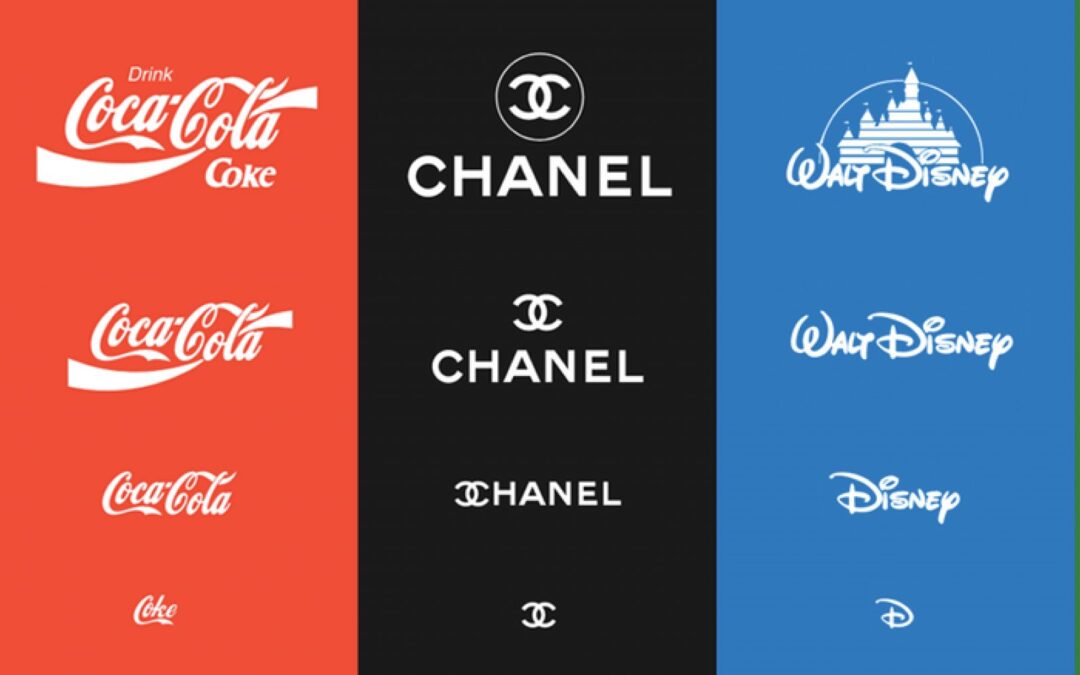
by threshold | Jun 24, 2023 | Creative, Digital Marketing, Marketing
 Ava Page
Ava Page
In today’s market, if you don’t have a standout brand, you might as well be invisible – but never fear.
We’re diving into the essence of building an authentic brand that resonates with your audience, so that everyone who engages with your brand thinks, “Yep – I’ve gotta work with them“.
In a world dominated by fleeting trends and constant noise, authenticity is the key to standing out and forging lasting connections.
So, grab your favorite beverage, settle into a cozy spot, and let’s explore the wonderful journey of creating an authentic brand together.
embrace your identity.
Authenticity starts with self-discovery. Understanding who you are as a brand is fundamental to building an authentic identity.
Take a moment to reflect on your core values, mission, and unique qualities. Embrace what makes you special and weave it into the fabric of your brand.
By staying true to your essence, you’ll attract like-minded individuals who resonate with your purpose.
know your audience.
Building an authentic brand requires a deep understanding of your target audience. Take the time to listen and learn about their needs, desires, and pain points.
By developing empathy and connecting with your audience on a personal level, you’ll be better equipped to create meaningful experiences and solutions that genuinely resonate with them.
consistency is key.
Consistency breeds familiarity and trust. Ensure that your brand voice, visual identity, and messaging align across all touchpoints.
From your website to your social media platforms and customer interactions, strive for a cohesive brand experience.
This consistent approach will create a sense of reliability and authenticity, earning the trust of your audience over time.
keep it real.
Authentic brands are built on honesty and transparency. Be open about your values, processes, and even your shortcomings.
Authenticity thrives in an environment of trust, and being transparent about your brand’s journey creates a genuine connection with your audience.
When you make a mistake, acknowledge it, learn from it, and communicate your commitment to improvement.
engage and listen.
Authenticity goes hand in hand with active engagement. Encourage conversations with your audience through social media, blog comments, or even offline events.
Engaging with your customers and truly listening to their feedback shows that you value their opinions and are committed to serving their needs.
By actively involving your audience, you can refine your brand and create experiences that resonate deeply.
celebrate your community.
An authentic brand understands that success is a collaborative effort. Celebrate and shine a spotlight on your community of customers, fans, and advocates.
Share their stories, testimonials, and experiences to create a sense of belonging and foster genuine connections.
By placing your community at the heart of your brand, you create a bond that extends beyond transactional relationships.
to conclude.
Building an authentic brand is a journey that requires self-reflection, understanding your audience, and a commitment to transparency.
By embracing your true identity, consistently delivering on your promises, and actively engaging with your community, you can forge deep and meaningful connections that will differentiate your brand in today’s crowded marketplace.
Remember, authenticity is a superpower that can transform your brand into something extraordinary.
So, go forth, be authentic, and let your brand shine!
before you go.
At Threshold, we specialize in helping brands discover and unleash their own authentic voice. If you’re looking for some professional guidance on your brand’s journey, we’d be thrilled to assist you.
Get in touch with one of our marketing experts today to embark on an exciting adventure of creating an authentic brand that connects with your audience on a profound level. It’s kind of our thing.
For more tips and information about marketing your everything, take a look at the rest of our blogs, right here on our website!
You can also subscribe to our email newsletter (it’s got some great stuff), and follow us on Instagram, Facebook, or LinkedIn!
about the author.
Ava is the Content Marketing Specialist at Threshold.
This makes her responsible for the content creation and management of all Threshold and PromoShak social channels, blog content, and SEO maintenance, and aids in digital marketing strategies both internal and client-facing.
When she’s not busy creating content, you can usually find her picking out new plants, island-hopping, watching Duke basketball, or spending time with her fur babies.

by Alex Pullen | May 28, 2023 | Digital Marketing, General, Marketing
 Ava Page
Ava Page
In the ever-evolving landscape of digital marketing, success hinges on making data-driven decisions. Monitoring and measuring your marketing efforts through Key Performance Indicators (KPIs) is crucial to understanding the effectiveness of your strategies and optimizing your campaigns.
By keeping a close eye on the right metrics, you can gain valuable insights and take proactive steps to achieve your marketing goals.
conversion rate.
Your conversion rate is a fundamental KPI that measures the percentage of website visitors who take the desired action, such as making a purchase, filling out a form, or making a phone call.
By tracking your conversion rate, you can gauge the effectiveness of your website’s design, user experience, and call-to-action elements, and marketing campaigns.
Analyzing your conversion points on your website and keeping track of where users fall off of your website can help you make data-driven decisions that can help you improve your website’s performance, increase sales, and ultimately enhance your overall marketing efforts.
return on investment (ROI).
ROI is a crucial KPI that assesses the profitability of your marketing campaigns. It measures the amount of revenue generated compared to the amount spent on marketing efforts. Tracking ROI allows you to determine which marketing channels and strategies are delivering the highest returns, enabling you to allocate your budget effectively.
Optimizing your marketing activities based on ROI allows you to maximize your profits and ensure long-term business success.
cost per acquisition (CPA).
Cost Per Acquisition (CPA) is a metric that calculates the average amount of money you spend to acquire a new customer. By tracking CPA, you can determine the efficiency of your marketing campaigns and evaluate the ROI for each customer acquired.
Monitoring this KPI allows you to identify areas where you can reduce costs, optimize your marketing channels, and increase profitability.
website traffic.
Monitoring your website traffic is vital to understanding the effectiveness of your marketing efforts and the popularity of your brand. Analyzing the number of visitors, their demographics, and their behavior on your website can provide valuable insights into the effectiveness of your marketing campaigns.
By leveraging this data, you can make data-driven decisions to optimize your content, enhance user experience, and attract more qualified traffic.
social media engagement.
With the growing influence of social media, tracking social media engagement metrics is crucial to assess your brand’s online presence and customer interaction. Metrics such as likes, shares, comments, and followers can help you measure the effectiveness of your social media strategies.
By analyzing engagement metrics, you can identify the type of content that resonates with your audience, refine your social media campaigns, and build stronger connections with your target market.
email marketing performance.
Email marketing remains a powerful tool for driving conversions and nurturing customer relationships. Tracking metrics like open rates, click-through rates (CTRs), and conversion rates for your email campaigns can provide insights into the effectiveness of your messaging and email strategy.
Using this data, you have the ability to enhance the performance of your email campaigns, improve customer engagement, and boost your overall marketing results.
to conclude.
By consistently tracking and analyzing these essential marketing KPIs, you can gain valuable insights into the effectiveness of your marketing strategies and make data-driven decisions to optimize your campaigns.
Understanding conversion rates, CPA, ROI, website traffic, social media engagement, and email marketing performance allows you to fine-tune your marketing efforts and drive meaningful results.
Remember, monitoring and adapting your KPIs based on changing trends and customer behavior is crucial for staying ahead in the competitive digital landscape. Start tracking these KPIs today to elevate your marketing game and achieve long-term success.
before you go.
Don’t forget, we’re experts when it comes to crafting marketing strategies that drive leasing results and building high-ranking SEO-friendly custom websites! Need help? Reach out to a CSM or any of our team members to get started on taking your marketing and SEO to the next level, see an increase in traffic, and watch the leads roll in.
For more tips and information about digital and real estate marketing, take a look at the rest of our blogs, right here on our website! You can also subscribe to our email newsletter, or follow us on Instagram, Facebook, or LinkedIn!
about the author.
Ava is the content marketing specialist at Threshold and is responsible for the content creation and management of all Threshold and PromoShak social channels, blog content, and SEO maintenance, and aids in digital marketing strategies both internal and client-facing. When she’s not busy creating content, you can usually find her in a coffee shop, picking out new plants, island-hopping, or spending time with her fur babies.

by threshold | May 15, 2023 | Design, Digital Marketing, Thought Leadership
 Mai Mongelous
Mai Mongelous
Why you should be focusing on Gen Z
As the largest generation in the United States, Gen Z comprises individuals born between 1997 and 2012.
This generation has grown up with technology and the internet always readily available, making them highly tech-savvy and deeply connected to social media. With an estimated purchasing power of over $143 billion in the US alone, Gen Z is a highly influential market segment that cannot be ignored by real estate businesses.
As such, it’s crucial for real estate businesses targeting Gen Z to consider the importance of an adaptable logo that resonates with this audience.
What is an adaptable logo?
An adaptable logo is a visual representation of a brand that can be easily adjusted to work across different mediums, formats, and applications without losing its core identity or essence. It is designed to maintain a consistent look and feel across various marketing materials such as print, digital and social media. An adaptable logo can be resized, repositioned, or modified to suit different contexts, but it retains the same essential design elements that make it instantly recognizable as the brand’s logo. The goal of an adaptable logo is to ensure that the brand’s messaging is cohesive and memorable across all channels, while also allowing for flexibility and versatility in different marketing contexts.
Why you should be creating adaptable logos
Real estate businesses targeting Gen Z need to consider the importance of an adaptable logo for several reasons.
Easily sharable
An adaptable logo is shareable. In today’s digital age, social media platforms are a crucial part of any marketing strategy, and Gen Z is known for their love of sharing content. An adaptable logo that looks great on various platforms can help attract attention and increase shares, ultimately driving engagement and awareness.
Branding
Cohesive branding is key. Gen Z is highly skeptical of businesses that lack authenticity or appear to be inauthentic. An adaptable logo that maintains the same look and feel across all marketing materials can help establish a consistent and authentic brand image that resonates. Since this generation values authenticity and creativity, a logo that reflects those values will be more likely to capture their attention and earn their trust in the long run.
Integration
Seamless integration matters. As a tech-savvy generation, Gen Z expects businesses to have a strong online presence.
An adaptable logo that can be easily integrated into a website, a phone app, social media profiles, and other digital marketing channels ensures that the brand’s messaging is consistent across all channels, making it easier for them to recognize and engage with the brand.
Trust and awareness
A recognizable logo builds trust. For Gen Z, trust is a key factor in making purchase decisions. A recognizable logo that appears across different mediums and formats helps build brand awareness and establishes that trust, leading to increased customer loyalty and retention.
Forward-thinking
“Future-proofing” is essential. As a forward-thinking generation, Gen Z expects businesses to be proactive in adapting to new technologies and mediums.
An adaptable logo that can easily be updated to remain relevant in the ever-changing marketing landscape demonstrates a business’s commitment to innovation and staying ahead of the curve. Since they tend to stay on top of trends, Gen Z is quick to spot dated marketing and graphics.
To conclude
An adaptable logo is very crucial for real estate businesses targeting Gen Z. By having a logo that is versatile, consistent, recognizable, and “future-proof”, real estate businesses can attract and retain the loyalty of Gen Z customers in a highly competitive market.
As a result, they can establish a strong and authentic brand image that resonates with this influential audience, leading to increased brand awareness, engagement, and customer loyalty.
Before you go
Don’t forget, we’re experts when it comes to crafting marketing strategies that drive leasing results and building high-ranking SEO-friendly custom websites! Need help? Reach out to a CSM or any of our team members to get started on taking your marketing and SEO to the next level, see an increase in traffic, and watch the leads roll in.
For more tips and information about digital and real estate marketing, take a look at the rest of our blogs, right here on our website! You can also subscribe to our email newsletter, or follow us on Instagram, Facebook, or LinkedIn!
About the author
Mai is something of a superstar here at Threshold. Working exclusively as our Senior Designer, there is nothing she can’t create flawlessly for our clients, and our own TH brand. At the end of the day, our creative THeam would not be the same without her leading the way both in her ability to bring dreams to life, and her strategy behind it all.
When she’s not on the clock, Mai loves keeping her creative juices flowing by acting as a maker in her hobbies. From refinishing furniture to creating her own art, her mind is always fueling itself with brilliance and taste. She only wishes she had more time in her days to continue doing more of what she loves.

by threshold | Apr 20, 2023 | General
 Ava Page
Ava Page
Sure, you’ve probably heard about keyword research in digital marketing before, but what does it really entail? At Threshold, we pride ourselves on our SEO success in websites, social media, ads, and more – and we couldn’t do it without successful keyword research.
So, whether you’re interested in stepping up your own keyword research, or seeing some of what we’re doing in our free SEO services on custom websites (yes, FREE – you read that right), this blog’s for you.
What are keywords?
It wouldn’t make any sense to explain the importance of keyword research without ensuring everyone’s on the same page with what keywords really are, so we’ll get this out of the way quickly.
Keywords are the words and phrases that will bring up your content based on search engine searches (say that 10 times fast).
For example, if someone searches “Austin luxury apartments” in Google, that’s the keyword that will bring up your blog posts, website, social media, etc. that include the same phrase. It’s all about establishing your relevance on the topic that users are searching for.
That’s where keyword research comes in.
What is keyword research?
Keyword research is how you discover which keywords are the most relevant and appropriate for your content to rank and perform at its highest in search engines. This is done through researching and analyzing your target audience, and seeing what topics, phrases, and search queries are trending around them.
Make no mistake, this isn’t as simple as saying, “We’re in the marketing area, so our biggest keyword is going to be ‘marketing’” – there’s much more to it than that.
Lucky for you, we’ve got this process down solid, so you don’t have to deal with the nitty gritty.
Why should you care about keyword research?
SEO
Above all else, when it comes to any online content from social media to websites and everything in between, SEO is king. With that being said, one of the easiest ways to boost your SEO success is with keywords, and the research that goes into choosing successful keywords for your content.
As we mentioned earlier, this is the easiest and most recognizable way for users to organically discover your content.
To go a step further and show you the numbers, over 90% of websites receive no organic traffic from search engine results – and we’ll let you in on the why: poor SEO strategies, and no keyword research.

If you want to become a part of the <10% that’s receiving sustainable organic traffic from search engines and social media, we’ve got the tools to get you there. Let’s do it together.
Creating content strategies
Keyword research should always be the first step in your content marketing strategies and plans. This ensures that you’re always focusing on the best topic for your content, and including just enough (not too little, not too many) keywords for the size of your campaign. Learn what your target audience is most drawn to, and what’s going to get your content the attention it deserves.
After all, why would you put so much time and energy into creating something without doing all you can to make sure it’s seen by as many people as possible?
Before you go
Don’t forget, we’re experts when it comes to crafting marketing strategies that drive leasing results and building high-ranking SEO-friendly custom websites! Need help? Reach out to a CSM or any of our team members to get started on taking your marketing and SEO to the next level, see an increase in traffic, and watch the leads roll in.
For more tips and information about digital and real estate marketing, take a look at the rest of our blogs, right here on our website! You can also subscribe to our email newsletter, or follow us on Instagram, Facebook, or LinkedIn!
About the author
Ava is the content marketing specialist at Threshold, and is responsible for the content creation and management of all Threshold and PromoShak social channels, blog content, SEO maintenance, and aids in digital marketing strategies both internal, and client-facing.
When she’s not busy creating content, you can usually find her in a coffee shop, picking out new plants, island-hopping, or spending time with her two dogs, Miska and Noodle, and two cats, T’Challa and Ada.

by threshold | Apr 15, 2023 | General
 Zac Rittberg
Zac Rittberg
As Gen Z continues to dominate the student housing market and transitions into first-time renters within the multifamily market, it is increasingly important to understand their social media habits. We’ve compiled some of the key social media trends and patterns among Gen Z that student housing and multifamily property management companies should use to better connect with their Gen Z target audience.
Short-Form Video Content
Gen Z is well-known for their love of short-form video content, like TikTok and Instagram Reels. Short, digestible content that they can consume on the go will resonate best with this demographic. We recommend incorporating short-form videos on your social channels, and if you haven’t created a TikTok for your community, what are you waiting for? Showcasing a tour of your community, highlighting your amenities, or walk-throughs of your models in a quick, engaging video can help capture the attention of your Gen Z prospects.
If you’re not convinced, look at what the data is telling us. YouTube (88%), Instagram (76%), TikTok (68%), and Snapchat (67%) dominate Gen Z’s social media usage.
Authenticity
Gen Z values authenticity and transparency in the content they consume. They want to see real people and real experiences, rather than overly polished and curated posts. Posting user-generated content from current residents highlighting real-life experiences or testimonials is an authentic way to showcase the diversity and unique personalities of not only your residents, but of your community.
Personalized Content
Don’t think that authenticity is enough, Gen Z expects a personalized experience from the brands they interact and engage with. They crave content that is tailored to their interests and needs. Think of it this way. You’re not selling just an apartment, you’re selling a lifestyle.
You’re selling the place where a first-time Gen Z renter is coming into adulthood for the first time. Highlight the community where your property is located that will give them the lifestyle they’re looking for.
For the adventurer, talk about proximity to hiking and biking trails. For the health nut, showcase healthy eateries and wellness amenities (like yoga & meditation studios). For the foodie, recommend restaurants with instagrammable moments.
Social Causes
Gen Z is not the generation to sit quietly. They are actively involved in social causes and they value companies and brands that align with their values. Sustainability ranks highest among social causes most important to Gen Z. If your apartment is LEED certified, you offer a recycling program, have a bike share program, or other initiatives, showcase your commitment to sustainability by highlighting these features in your socials or through short-form video content.
Have you thought about organizing a community-wide clean-up or some other volunteer event to encourage resident engagement while also promoting a social cause?
Direct Communication
The days of phone calls are long gone. Gen Z prefers direct communication through messaging apps as opposed to traditional communication methods. If you want to reach this audience, make sure that you have someone on your team monitoring social comments and messages through the social apps you use.
If those messages go unanswered, you may have just lost a lead. If those public comments go unanswered, your perception to others is that you don’t value this direct communication with your prospects and residents.
Local Micro Influencers
Last, but not least, Gen Z is highly influenced by their peers and social media influencers. However, influencers with a large national or global reach may not resonate as well with Gen Z like a local micro-influencer. These influencers have smaller but highly engaged followings with a specific region which makes them more relatable and trustworthy (or authentic!) to Gen Z.
We recommend leveraging the power of a micro-influencer in your markets by partnering with them to showcase and promote your property. Student housing communities could consider partnering with a well-known student athlete that may already be living at your property. Multi family communities could consider lifestyle influencers. Whichever micro-local influencer is the right fit for your community and your residents/prospects, your collaboration with them for social content is necessary.
Host events or meet-and-greets, offer exclusive discounts of promotions. Tapping into the influence of local micro-influencers will help you increase brand awareness and attract new residents.
By understanding these social media trends and patterns among Gen Z, you can better connect with and engage your Gen Z prospects. Incorporating these trends into your social media strategy can help you build a strong, authentic relationship with your target audience, resulting in increased resident satisfaction and retention.
Before you go
For more tips and information about digital and real estate marketing, take a look at the rest of our blogs, right here on our website! You can also subscribe to our email newsletter, or follow us on Instagram, Facebook, and Twitter!
About the author
Zac is the Digital Client Success Manager at Threshold. His role is vital to our operation as he helps our clients to develop and launch paid digital strategies, and strategize for short and long term success. When he’s not on the clock, you can catch him at the gym… pretty much always.

 Ava Page
Ava Page


 Mai Mongelous
Mai Mongelous


 Zac Rittberg
Zac Rittberg